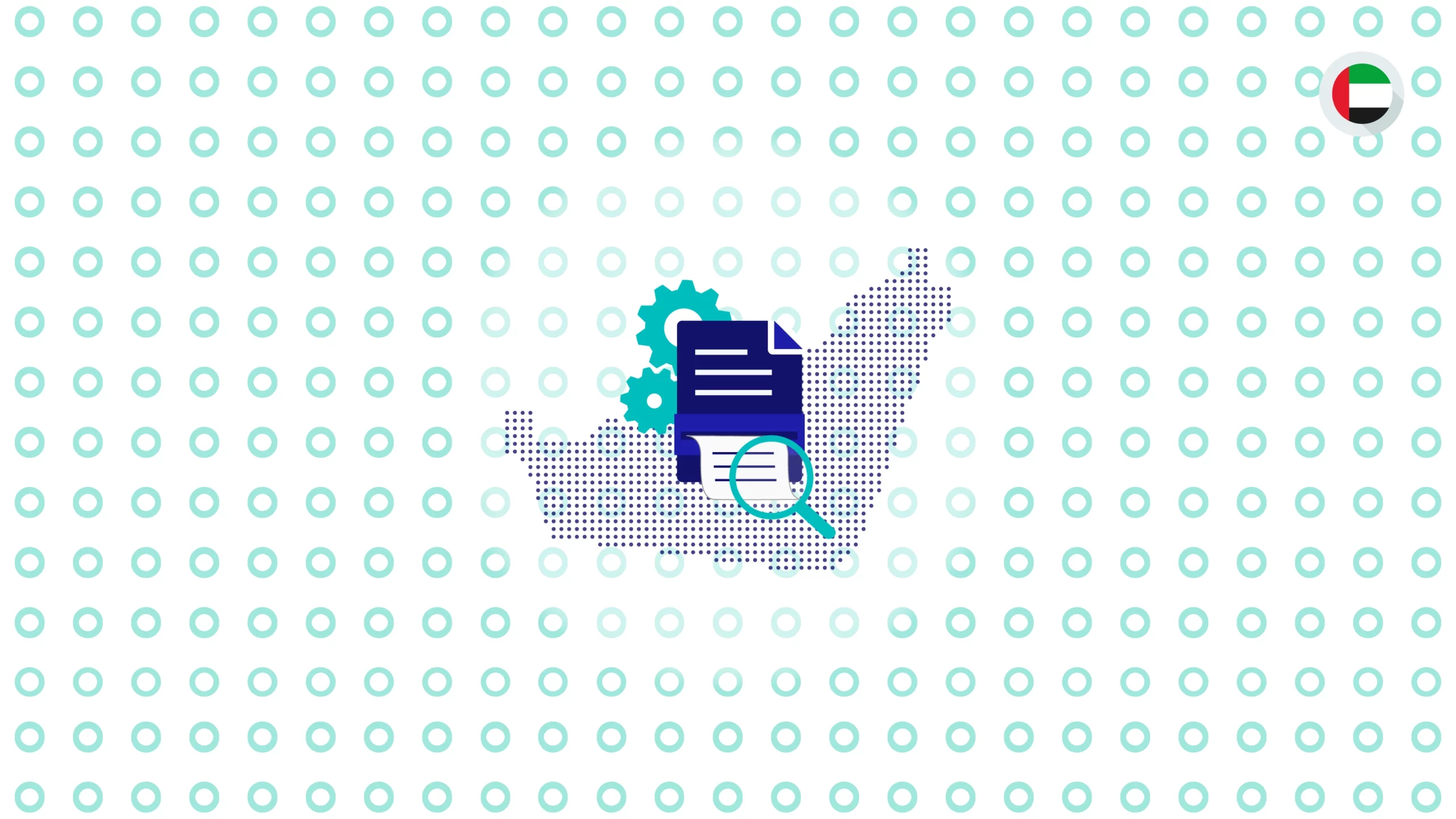What is Vehicle RC Verification? Role in KYC and Implementation Steps Explored
December 16, 2024
8 minutes read
- With over 296 million vehicles in the US (2024 data), verifying RCs is critical to identify the small but dangerous percentage that are unregistered and potentially tied to crime.
- Checking RCs can stop businesses from unknowingly assisting terrorists or criminals who exploit unregistered vehicles to transport contraband or plan attacks.
- Thorough RC verification protects businesses from deceptive “title washing” schemes that hide a vehicle’s checkered past, like serious damage or salvage history.
Remember how a simple barcode completely changed retail checkout? It replaced manual price entry with a simple scan-and-go process.
Sometimes the most powerful solutions aren’t the most complex ones. They’re the everyday tools we’ve been using all along – just used more intelligently.
Vehicle RC verification fits that pattern perfectly.
At first glance, it’s a straightforward document check – just one of many in the KYC process. But look closer, and you’ll find it’s actually a uniquely reliable source of verified information, connecting multiple crucial data points in your KYC verification process.
It’s not just about confirming someone owns a vehicle – it’s your window into asset verification, address proof, and authenticity all wrapped into one neat package.
Ready to make registration certificates work harder for you?
This 6-minute guide covers the complete picture of RC verification: how it works, why it matters, and practical ways to implement it in your daily operations.
What is Vehicle RC verification?
Vehicle RC verification is a process where registration certificates are checked against official motor vehicle records to confirm they’re authentic and valid. This verification examines key document elements including vehicle identification numbers (VIN), ownership details, registration dates, and lien information.
Vehicle Registration Certificate (RC) is an official document that serves as proof of ownership and registration of a vehicle. Verifying RC is similar to checking a birth certificate – it’s about making sure the document truly represents what it claims.
While most people simply see RC as their vehicle’s paperwork, these certificates quietly serve as trusted connectors between vehicle owners and the dedicated systems that help maintain road safety and security for everyone. It includes:
- VIN: Unique 17-digit vehicle identification number
- License plate number: Assigned by state DMV to visibly identify vehicle
- Owner name and address: Current registered owner(s) listed
- Vehicle details: Make, model, year, body type, color
- Title status: Notes if the vehicle has clean or salvage title
- Registration dates: Effective and expiration dates of current registration
- Fees paid: Lists registration fees, taxes and charges paid
- Other state-specific data: May include weight, fuel type, odometer reading, etc.
When organizations look at these certificates, they’re really opening a window into maintained state databases that protect information about every properly registered vehicle. This matters because it helps keep both vehicle owners and businesses safe from potential problems.
Role of RC Verification in KYC Process
RC verification acts as a trusted friend in the know-your-customer (KYC) process, offering reliable, government-verified information about both assets and identity.
Businesses, especially those in finance, spend considerable time making sure they truly verify who their customers are – it’s a responsibility they need to take seriously. That’s where Registration certificate verification becomes their reliable partner in this important work, helping build trust in several meaningful ways:
- Asset ownership proof: Registration documents create a clear, caring connection between people and their vehicles. This matters when someone applies for a loan or insurance – it helps everyone feel secure about who owns what.
- Address verification: Within those registration details lies something valuable for everyone involved – proof of where someone calls home. Businesses can match this address information with other documents, creating a system of verification that benefits both the institution and the customer.
- Identity cross-reference: RC verification adds an additional layer of identity confirmation by cross-referencing the details against other identification documents. This systematic comparison helps businesses validate customer identities while maintaining efficient processing times.
- Fraud prevention: Beyond simple identity checks, RC verification offers rich information about the vehicle itself. This helps lenders make informed, fair decisions about loans that work well for everyone involved.
- Meeting compliance: Federal regulations ask financial institutions to be thorough when verifying customer identities. RC verification helps meet these important requirements while creating clear records that show how carefully each step was handled.
- Insurance status verification: RC verification allows institutions to check current insurance coverage status through official records, providing important data points for risk evaluation and lending decisions.
- Improved customer profiling: RC verification data contributes to understanding customer assets and financial positions, helping institutions recommend appropriate financial products based on verified information.
Long story short, registration certificates act as a bridge that connects different pieces of information to create a complete picture of someone’s identity.
Step-by-Step RC Verification Process
Creating an effective RC verification system means balancing security with simplicity. Can be complex but fret not – we’ve designed one you can use:
Document Collection and Preparation
Before starting the verification process, establish clear guidelines about required documentation.
Every RC verification needs the original or digital registration certificate, but supporting documents make the process more reliable. Create a standardized checklist that includes state-specific requirements and share it with all verification staff.
Here are four documents you must collect for RC verification:
- Registration certificate (original or authorized digital copy)
- Current government photo identification
- Recent proof of address (utility bills, lease agreements)
- Active insurance documentation
Also, some states require additional forms. So it’s suggested that you check local requirements and collect any additional forms your state requires to prevent delays later.
Initial Document Review Procedures
This is where attention to detail truly matters. Every piece of information on the registration certificate needs careful review. Numbers should match across documents, dates should make sense, and names should be consistent. Small discrepancies often point to issues that need addressing early in the process.
For additional security, you can consider implementing a dual-review system where a second staff member validates initial findings.
Database Cross-Reference Methods
Now that you have all the documents for RC verification, connect with official motor vehicle databases to verify your registration status. When reviewing results, look for:
- Name consistency across all documents
- Date validity and sequence
- Complete VIN history review
- Address verification
- Active status checks
Manually doing this check can be a bit full of hassles. However, modern verification systems can check multiple databases simultaneously, creating a more complete picture.
Results Analysis and Response Protocols
Create detailed records of findings from each verification step. Note both matches and discrepancies clearly, explaining their significance. For successful verifications, outline the next steps for moving forward with transactions.
When issues arise – when information doesn’t match perfectly across sources – follow a structured resolution approach:
- Level 1: Review original documents carefully – often simple corrections resolve issues
- Level 2: Contact document providers with specific questions
- Level 3: Request focused additional documentation
- Level 4: Involve supervisory review when needed
Methods of RC Verification: Manual, Online, and API Solutions
Verifying registration certificates comes down to one essential goal: confirming authenticity efficiently while maintaining security. You can achieve it using any of the three methods. However, all come with distinct advantages for different situations.
1. Manual Verification Method
Manual verification remains valuable for situations requiring direct document examination. This traditional method involves physical inspection of registration certificates and supporting documents.
The process typically starts with document authenticity checks – examining paper quality, watermarks, and security features that distinguish genuine certificates. Staff members trained in document verification look for specific markers while maintaining careful records of their findings.
A secondary manual check involves reaching out directly to state motor vehicle departments. While this takes more time, it provides an extra layer of certainty for high-value transactions or cases requiring special attention.
2. Online Portal Verification
State motor vehicle departments now provide secure online portals that simplify the verification process. These systems allow authorized users to input registration information and receive immediate validation results.
What makes these portals particularly helpful is their direct connection to current registration databases. When someone enters a vehicle’s information, the system checks against real-time records. This means organizations can verify the following:
- Current registration status
- Owner information accuracy
- Registration expiration dates
- Any recorded liens or restrictions
The process typically takes minutes rather than hours or days while maintaining security through encrypted connections and controlled access protocols.
3. API Integration Solutions
For organizations handling regular verification needs, API (Application Programming Interface) integration offers consistent, automated verification. These systems connect directly with motor vehicle databases through secure channels.
Think of APIs as digital assistants that handle verification tasks automatically. When someone submits registration information through an organization’s system, the API starts all the heavy lifting.

This automation helps reduce errors while creating consistent records of every verification attempt. Organizations particularly appreciate how API systems can handle multiple verifications simultaneously without sacrificing accuracy.
Choosing the right method depends largely on organizational needs, volume of verifications, and security requirements. Many organizations actually benefit from combining approaches – using automated systems for routine checks while maintaining manual verification capabilities for special cases.
If you are looking for an API solution, Signzy offers RC and DL verification APIs – to connect you directly with motor vehicle databases without the complexity, giving you instant, accurate results.
Signzy also offers a complete identity verification solution for organizations looking to go even further with security and compliance adherence.
FAQ
How long does RC verification typically take?
Manual verification takes 24-48 hours, while API-based verification provides results within minutes. Processing time may vary based on state systems and document complexity.
Can RC verification be done completely online?
Yes, through state portals or API integration. However, some high-risk transactions might require additional manual verification steps.
What happens if verification finds discrepancies?
Organizations follow structured resolution processes, starting with document review and potentially requesting additional information from customers.
Are international registration documents handled differently?
Yes, international documents require specialized verification processes and might need additional authentication steps or documentation.














